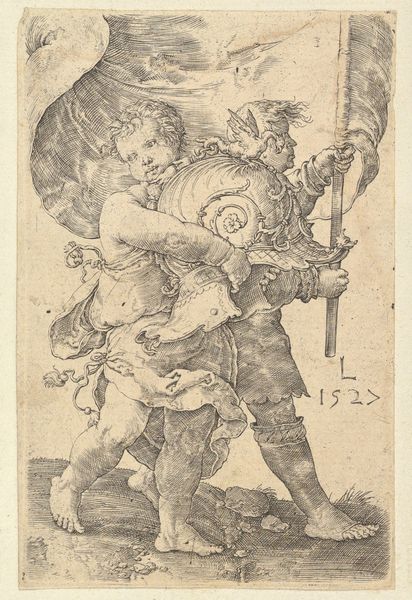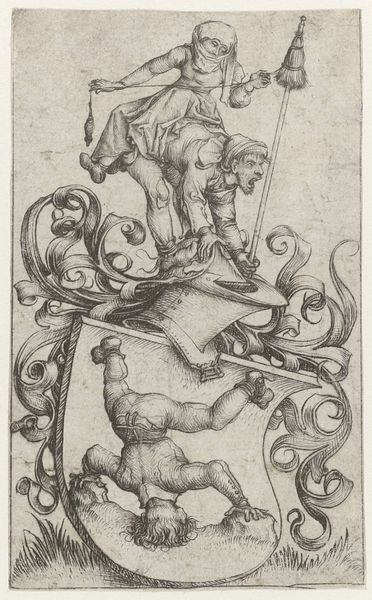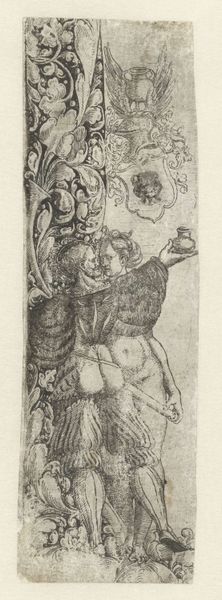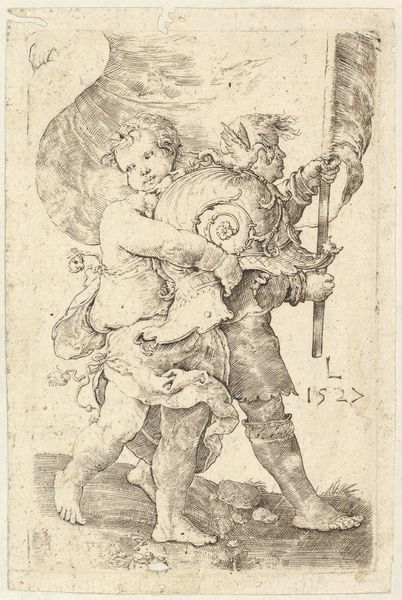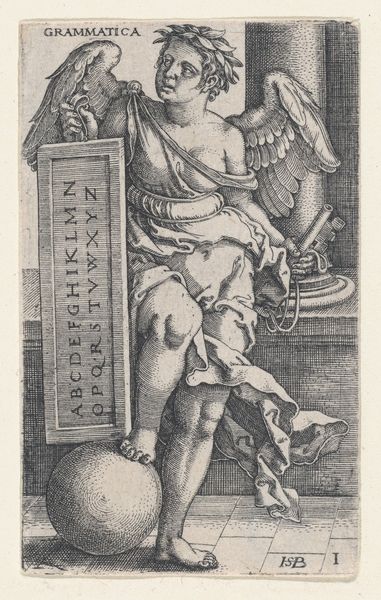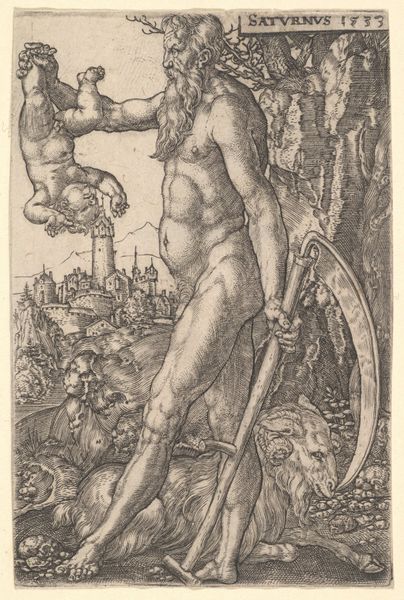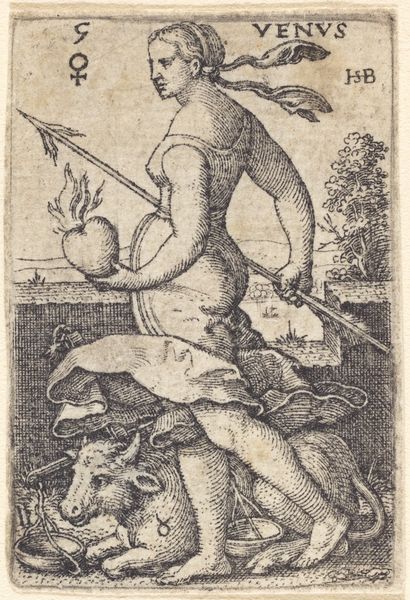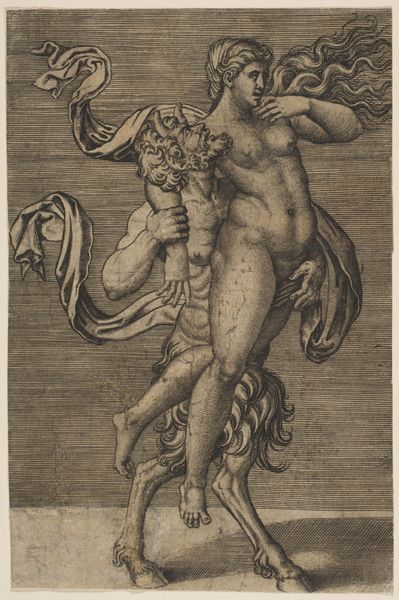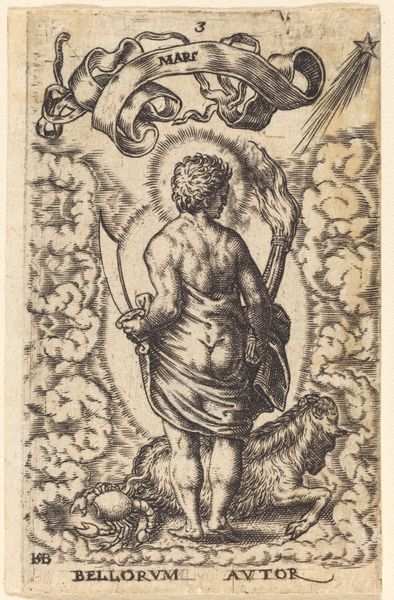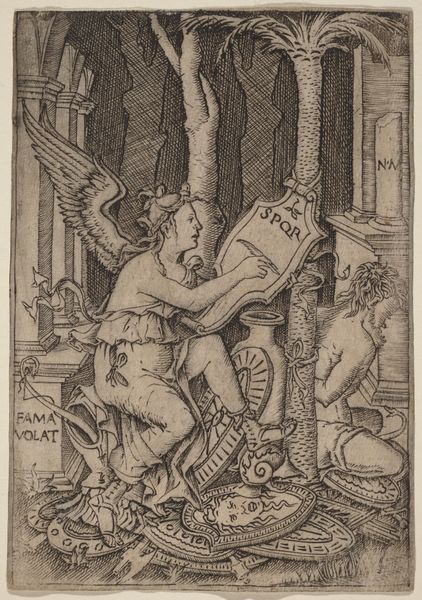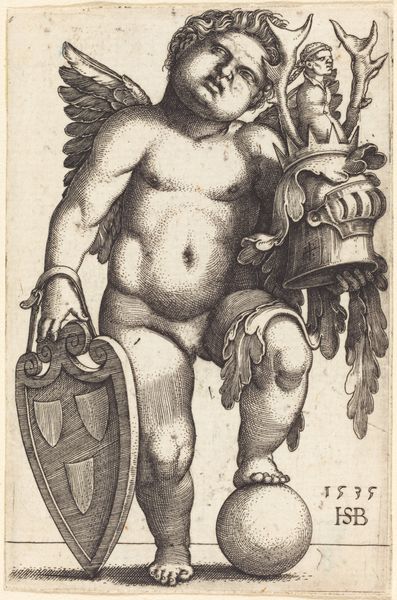
Fragment of a Grotesque Decoration with a Term and Putto 1540 - 1550
0:00
0:00
drawing, print, paper, ink
#
drawing
#
allegory
# print
#
pen sketch
#
pencil sketch
#
mannerism
#
figuration
#
paper
#
ink
#
pen-ink sketch
#
pen work
Dimensions: 10 1/4 x 4 1/8 in. (26.1 x 10.4 cm)
Copyright: Public Domain
Curator: Welcome. Today, we're looking at "Fragment of a Grotesque Decoration with a Term and Putto," a pen and brown ink drawing made around 1540-1550, attributed to Andrés de Melgar. It's currently held at the Metropolitan Museum of Art. Editor: It's… busy. The line work feels frantic, and it’s hard to immediately decipher the relationship between the figures and ornamentation. Is it a study for something larger, or perhaps a piece onto itself? Curator: Precisely, and that speaks to its nature as a fragment. The drawing reveals the Mannerist fascination with elaborate ornament. The putto and term are both common decorative motifs that can often be found embellishing larger works or structures, especially tapestries or even garden grottos. The material itself--pen and ink on paper—was easily accessible for artists. Editor: So, not necessarily high art from its origin. How might such a design impact those who were crafting larger works using it as the guide? I am considering labor here. What would the original process entail in terms of producing works to fulfill social and practical needs, using such models? Curator: That's a fascinating angle to consider. Such designs facilitated mass production, spreading Mannerist style through workshops and enabling decorative programs on an unprecedented scale. An individual artist might copy a certain element repeatedly, as determined by the commission requirements. Editor: Returning to the piece, it presents quite a peculiar composition. Look at the almost illogical arrangement of figures; how the term almost seems crushed beneath the weight of the upper design element. This deliberate distortion and crowding certainly communicate that quintessential Mannerist unease. Curator: Agreed, the spatial ambiguity adds to that feeling. And the allegorical figures contribute a rich, yet somewhat opaque, symbolic dimension. It feels intellectual. Editor: Right, it encourages speculation but defies concrete interpretation. This unresolved quality adds a great deal to the lasting allure of Mannerism, and this drawing offers a good introduction. Curator: Indeed, it embodies both the aesthetic and the means of disseminating it during its period. It really underscores the collaborative nature of artistic creation in that era, where individual skill met the demands of widespread replication. Editor: Thanks to this intense rendering, it presents a clear vision of the social contexts that encouraged their design. This little piece offers significant insight into period values.
Comments
No comments
Be the first to comment and join the conversation on the ultimate creative platform.
